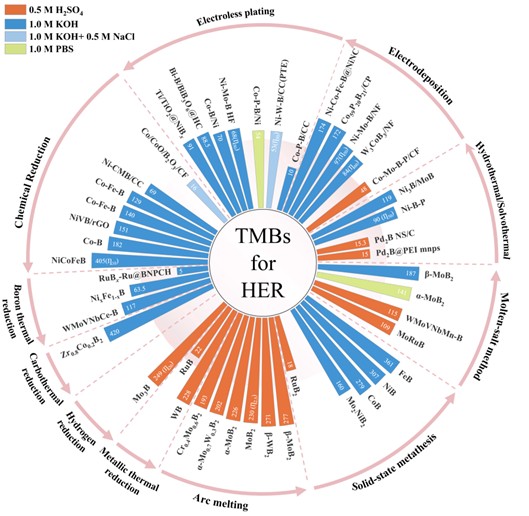T.Z. Hong #, C.Z. Xiao #, J. Jia *, Y.Y. Zhu, Q. Wang, Y. Liang, X. Wang, B.T. Zhang, G. Zhu * and Z.-S. Wu *
Electrochemical Energy Reviews, 2025, accepted.

Transition metal borides (TMBs), due to their unique electronic structures and metallic-like properties, have demonstrated activity and stability surpassing traditional catalysts in the hy-drogen evolution reaction (HER) of water splitting, becoming a research focus in the field of energy materials. However, existing research generally lacks a systematic decoupling of the multi-dimensional correlation mechanisms of synthetic methods-structural regula-tion-performance optimization, severely restricting the rational design process of TMB catalysts. This review aims to provide a cross-scale design paradigm for the development of high-performance TMB-based HER electrocatalysts by constructing a three-in-one analytical framework of theoretical guidance-synthetic innovation-mechanism analysis. First, based on a fundamental understanding of the HER mechanism and d-band theory, we propose the core principles for designing efficient catalysts. Subsequently, we review various synthetic methods, from traditional to innovative, and discuss their impact on catalytic performance. By in-depth analysis of the correlation between synthetic parameters and HER activity, valuable insights are provided for researchers seeking to optimize TMB-based electrocatalysts. Finally, this review highlights the current challenges and outlines future directions, emphasizing the immense po-tential of TMB-based electrocatalysts in advancing sustainable hydrogen production.